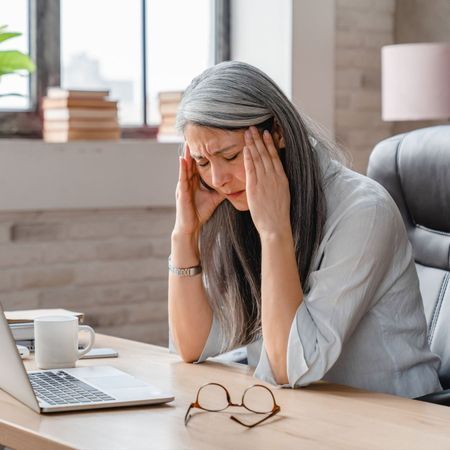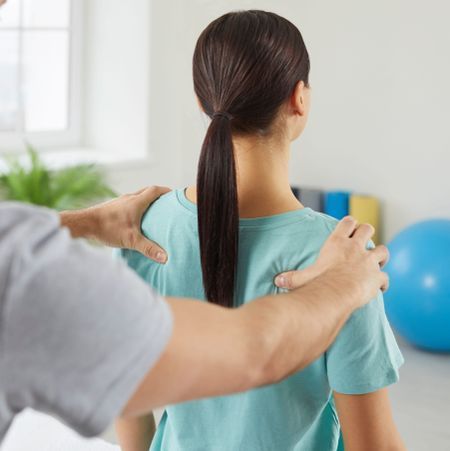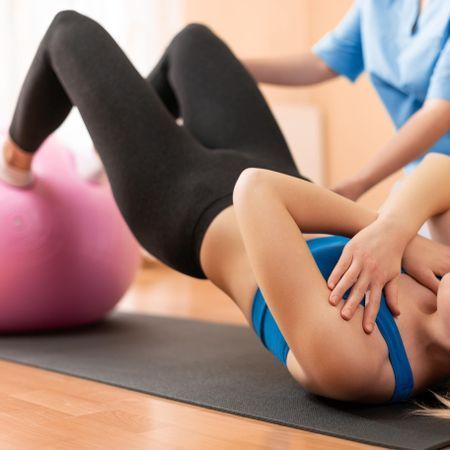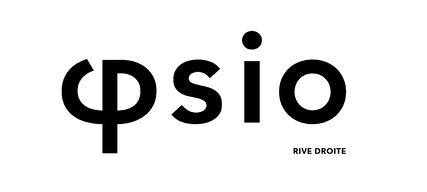Maxillofacial
Rehabilitation | Shoulder | Posture | Perineum
DO YOU SUFFER FROM FACIAL PAIN, NOISY JOINTS OR HEADACHES? DO GET MIGRAINES? WHAT ABOUT TINNITUS?
Localised movement therapy for pain relief.

What is maxillofacial and lingual rehabilitation?
Maxillofacial rehabilitation is a movement therapy that treats disorders and pain related to the temporomandibular joint, jaw, mouth, skull, face and neck.
Lingual rehabilitation treats sleep apnoea problems in both children and adults.
We work on the physiology of breathing, on the functions of the tongue and of swallowing.
The symptoms treated by
Maxillofacial and lingual rehabilitation are:
- Pain while chewing or opening the mouth,
- Joint noises: clicking, popping, cracking or grinding,
- Blockages at the opening,
- Fractures,
- Scars on the face and neck,
- Headaches: tension headaches/migraines,
- Clenching and grinding of teeth (bruxism),
- Impairment of hearing:
- Somatosensory tinnitus
- Blocked ear sensations: Eustachian tube dysfunction (tubal rehabilitation),
- Swallowing disorder,
- Lingual dysfunction, dysmorphosis: when the tongue doesn’t fit properly in the mouth (oral cavity)
- palatal phonation.
STABBING PAIN IN THE SHOULDER? LACK OF STRENGTH?
Regain the mobility of your shoulder and say goodbye to the pain!

What is shoulder rehabilitation?
The CGE (Concept Global d’Epaule) shoulder rehabilitation concept was devised by Thierry Marc, president of the SFRE (Société Française de Rééducation de l'Epaule).
This method enables the treatment of shoulder pathologies through glenohumeral recentring.This is possible because the pressure on our shoulder tends to cause the humeral head to rise and compress the bursa and tendons under the acromial arch.
In some cases, this dysfunction can lead to a rupture.
Rehabilitation follows 2 fundamental principles :
Regaining of passive joint amplitudes.Restoration of the stabilising function of the rotator cuff.
What is the treatment procedure?
The 3 phases of rehabilitation are:
Correction of shoulder dysfunction.Dynamic rebalancing by working on the lateral rotators.Stabilisation of balance achieved by working on the compression forces.
ADOPT THE RIGHT POSTURE.
Chronic pain that can be avoided!

Why should you pay attention to your posture and what is postural rehabilitation?
The physiotherapist will examine your posture, i.e. the way you stand.
For example: Does your head jut forward?Are your shoulders hunched? Is the middle of your back too arched?The lower back too concave?
Do you have bowed legs or flat feet?
Your posture says a lot about you, and your body is a valuable indicator of your muscular tensions.
This assessment will allow us to establish a treatment strategy tailored to your needs.Alleviating your back and joint pain is often accompanied by an improvement in your posture.
This is the technique of choice for all chronic pain.
Good posture is also essential for your well-being at work, and so we offer you an ergonomic analysis of how you hold your body at work.
URINARY INCONTINENCE OR OTHER PERINEAL ISSUES?TRAIN AND STRENGTHEN YOUR PELVIC FLOOR MUSCLES!

Who is perineal rehabilitation aimed at?
It’s forwomen, men and children, too.
The perineum is not just a matter for women – we all have a perineum!
So why should we rehabilitate our perineum?
The perineum consists of a set of muscles that support the lower digestive tract, the urinary tract, the genital tract and control the bladder.
That’s why it’s important to do what’s necessary to keep your perineum in shape!
Several factors can result in loss of tone and weakness in the perineum, such as pregnancy and childbirth of course, but also age, menopause, constipation, being overweight, genetics, etc.
This weakness can lead to urinary or anal incontinence, organ prolapse, sexual problems or uncomfortable pressure on the bladder.
Perineal rehabilitation enables you to train and strengthen the perineum muscles so as to improve your discomfort, remedy the problems and prevent future problems. Mothers need rehabilitation and perineal gymnastics before they can resume sporting activities.
Which problems do we treat?
In women:
- urinary and anal incontinence
- pelvic pain,
- sexual problems,
- prolapse,
- problems with abdominal muscles.
In children:
- enuresis (urinary incontinence),
- Bladder sphincter dyssynergia.
In men:
- Pre- and post-prostatectomy.
We use probes and biofeedback in our treatment.
ART MEDICINE
Postural rehabilitation for the health, well-being and performance of the artist.


